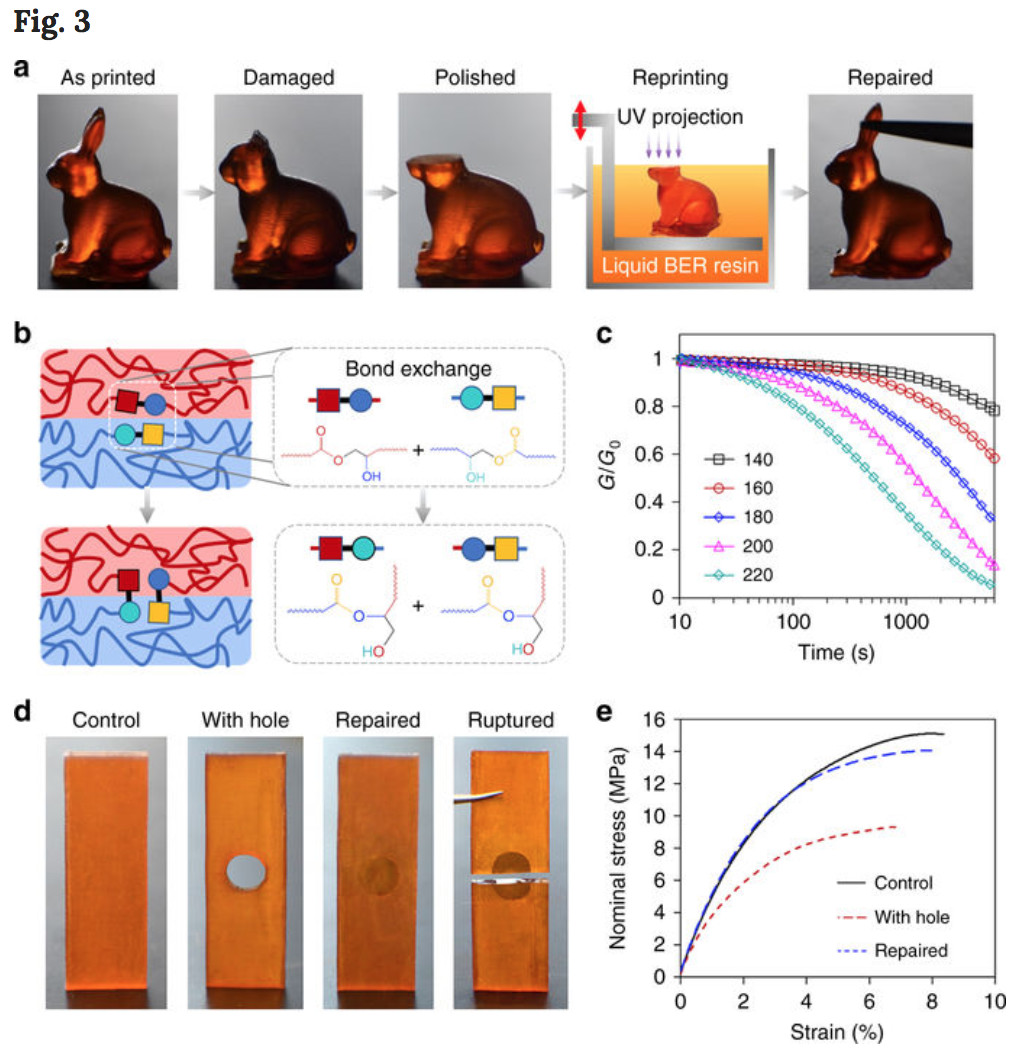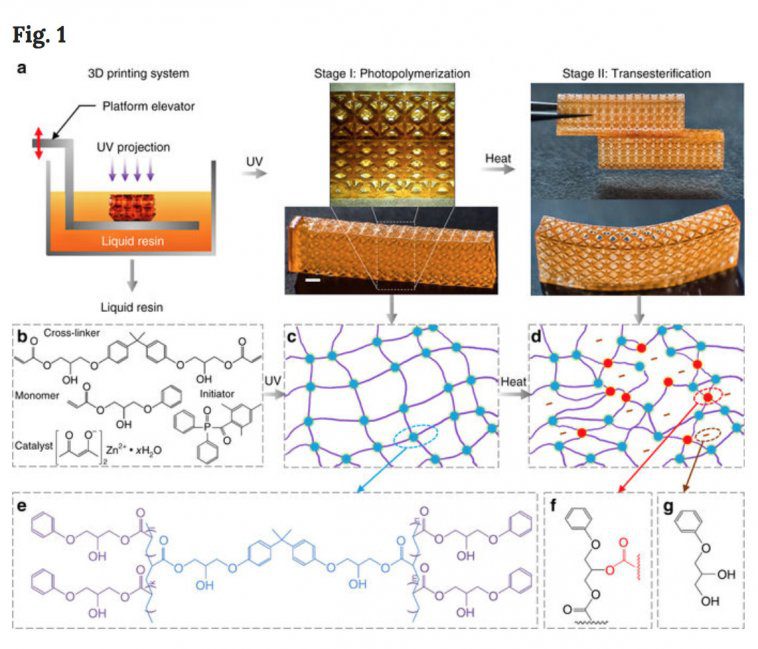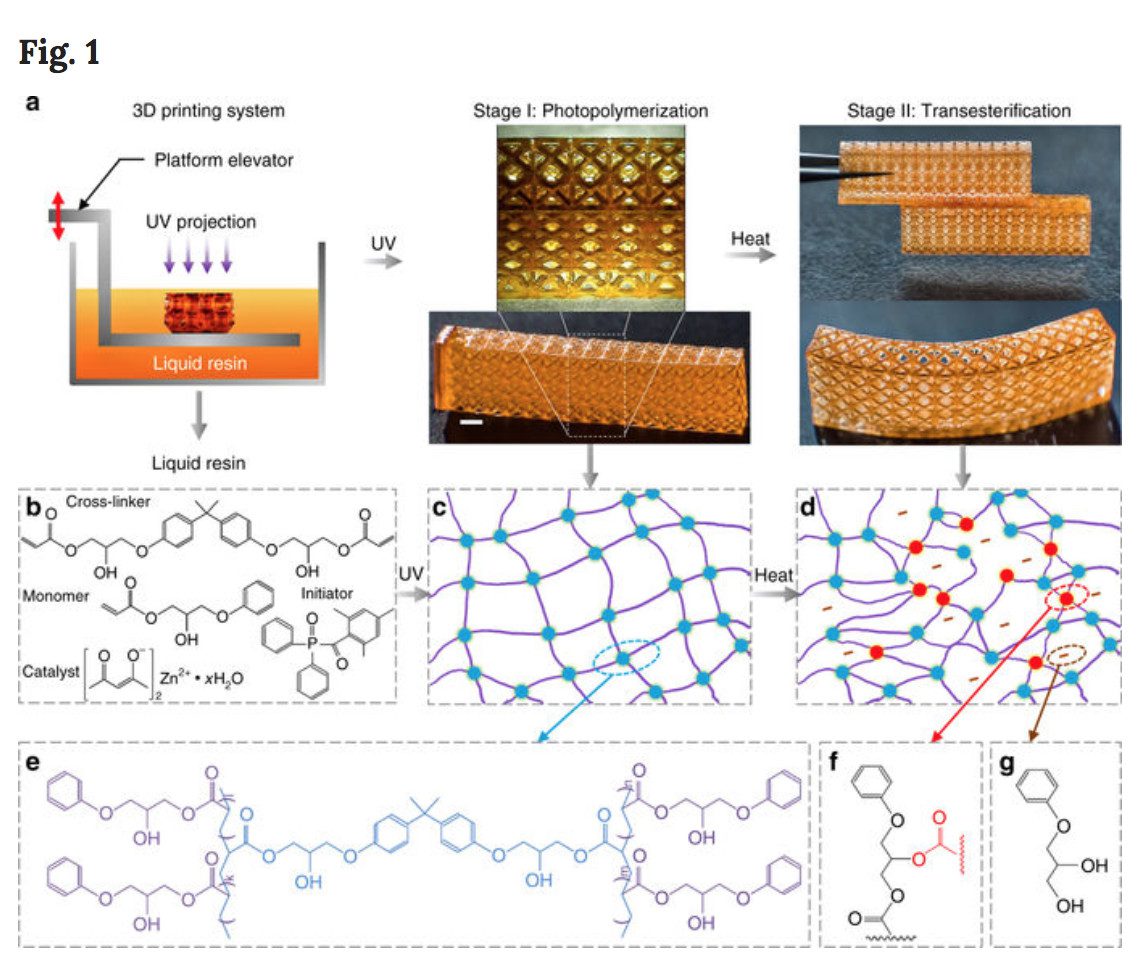Researchers from Singapore University of Technology and Design (SUTD) have developed a two-step polymerization process to fully recycle 3D printed thermosetting photopolymers.
Although 3D printing technology has proven to be beneficial to the environment in a number of ways — such as by saving the bees or helping us grow food in urban areas — the current market still has a huge focus on thermosetting photopolymers.
Such materials can be used to create any number of shapes when fed through a 3D printer. However, in most cases, once a 3D printed object has taken its final form, there’s no going back. While we’re some of the biggest fans of 3D printing around, the plastic waste which can be generated from creating a new object can be hard to reconcile with.
But in an effort to make the technology more sustainable, researchers from Singapore University of Technology and Design (SUTD) are developing a system which can help recycle or remold such 3D prints. The idea is centered around a two-step polymerization strategy can help create reprocessable thermosets (aka 3DPRTs) that would allow users can reform a 3D structure, repair a broken part or even recycle any unwanted material.
Kavin Kowsari, an assistant professor at SUTD, explains the motivation behind their work, explaining that the “explosion” of 3D printing technology along with the “unprocessable” nature of its products could have “serious” implications for the environment. But, thankfully, Kowsari also believes that this two-step polymerization strategy could reduce the waste build-up of materials from the technology.
3D Printed Objects Can be Fixed or Melted to Make New Products
Working in a laboratory project, the researchers discovered that its possible to fix or melt 3D printed objects and turn them into other products using a process called thermal self-healing.
This treatment entails placing UV cured samples inside of a universal oven at 180°C for four hours. The first object they treated was a 3D printed rabbit that was missing its ears. After four hours of baking the print, it became malleable enough to restore the design and reform the bunny ears.
The researchers add that after this process, the model gained 93 percent of its material strength and 100 percent of its stiffness back, proving that the process can “robustly bond” parts and keep the mechanical properties intact.
The findings are quite significant, but this isn’t all the researchers are using their baking oven for. In fact, the team also found that for thermally treating a print for up to four hours, depending on its size, it was possible to then grind the samples into fine powders. These powders could then be pressed between foil-coated metal plates, completing the recycling process full stop.
“We can exploit this process to combine 3D printing with traditional manufacturing methods, such as molding, pressing, and thermoforming, to increase manufacturing capabilities and decrease manufacturing time,” the research teams explain.
The team’s research, entitled “Reprocessable thermosets for sustainable three-dimensional printing“, was recently published in the journal Nature.

Source: Recycling International
Website: LINK



